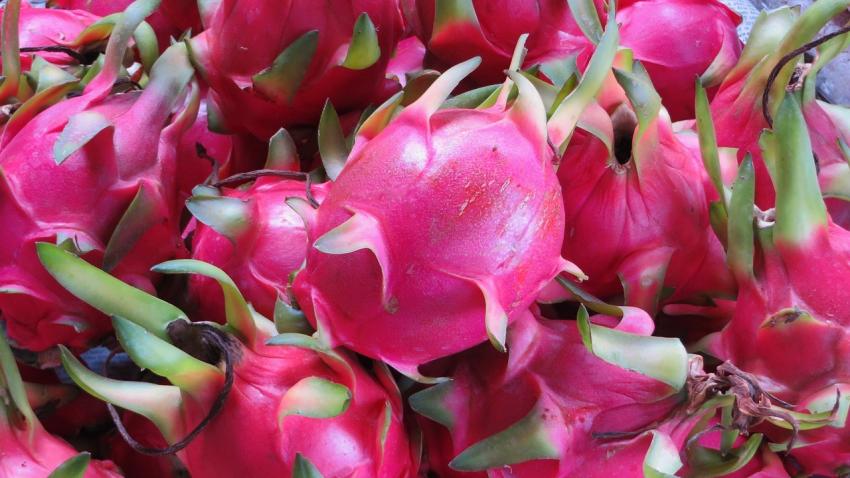You are here
Back to topChina’s Dragon Fruit Imports Down 50% in First Half of 2023

Recent years have seen a steady decline in dragon fruit prices in China, driven by a continuous expansion of domestic cultivation. Concurrently, China’s dragon fruit import volumes have also been falling as domestically grown fruit gradually take center stage on the market.
The period from July to August marks the peak season for dragon fruit supplies. In Guangxi province, China’s largest producer of dragon fruit, prices have descended to their yearly lowest. Retail prices for red-fleshed dragon fruit at a market in the provincial capital Nanning are reportedly hovering at around 7 Chinese yuan ($0.96) per kilogram, whereas white-fleshed dragon fruit from Vietnam are fetching approximately 9 yuan ($1.24) per kilogram. At some stalls in the market, prices for red-fleshed dragon fruit have even plummeted to as low as 10 yuan ($1.37) for 10 pieces. A representative from a dragon fruit orchard in Nanning’s Long’an County noted that farm gate prices for the crop had diminished by 1 yuan ($0.14) per kilogram compared with the same period of last year.
Prior to 2022, dragon fruit prices had remained relatively stable, with retail prices consistently around 7 yuan ($0.96) per kilogram. In 2022, however, a period of high temperatures led to large quantities of the fruit hitting the market almost simultaneously, resulting in prices as low as 1 yuan ($0.14) per fruit. Nonetheless, at that time, fruits with this price were mostly small in size. This year, fruits priced at 1 yuan per piece have been noticeably larger. The trend of diminishing dragon fruit prices has also been widely observed in other cities across the country.
During the winter, average farm gate prices of dragon fruit range from 12 to 16 yuan ($1.65–2.20) per kilogram. By contrast, prices during the summer months are noticeably lower at around 2–4 yuan ($0.27–0.55) per kilogram. July and August typically see the lowest prices for dragon fruit. With the approach of the Mid-Autumn Festival in September, retail prices of red-fleshed dragon fruit gradually recover to 8–10 yuan ($1.10–1.37) per kilogram. In an effort to increase their earnings, some dragon fruit growers have started replacing red-fleshed varieties with yellow-skinned ones, also known as kirin fruit. Because this novel type of dragon fruit has higher cultivation costs and lower yields, its farm gate prices in Guangxi are currently above 36 yuan ($4.94) per kilogram.
Dragon fruit cultivation in Guangxi dates back to the late 1990s. The province has a dragon fruit cultivation area of around 22,700 hectares, accounting for approximately one-third of China’s total. As the provincial capital, Nanning boasts a planted area of 12,700 hectares and an annual output of about 450,000 metric tons. The dragon fruit season in Guangxi runs from May to December, with a supply window of over six months.
The surge in domestically produced dragon fruit has led to a significant decrease in the quantity of imported dragon fruit. According to data from China Customs, the import volume of this crop during the first half of 2023 reached 206,000 metric tons with a value of 1.37 billion yuan ($187 million), representing year-on-year decreases of 50.4% and 42.9%, respectively. This marks the lowest record in nearly a decade. In the first half of this year, the overwhelming majority of dragon fruit imported into China — 99.9% of the total — originated from Vietnam.
Image: Pixabay
This article was translated from Chinese. Read the original article.















Add new comment